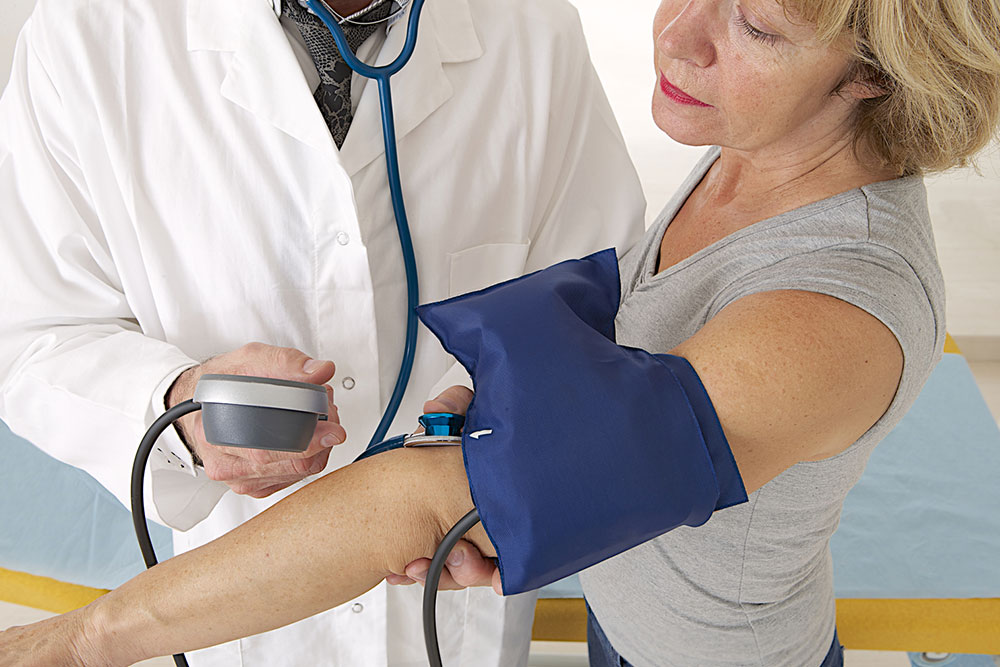Comprehensive Guide to Managing Hypertension: Recognizing Symptoms and Implementing Effective Treatments
This comprehensive article provides an in-depth overview of hypertension, including its symptoms, risks, and practical treatment strategies. It emphasizes the importance of early detection through symptom recognition and highlights lifestyle changes like diet, exercise, stress reduction, and sleep hygiene to control high blood pressure. The guide aims to educate readers on managing hypertension proactively to prevent severe health complications, advocating for a balanced approach of lifestyle adjustments combined with medical intervention when needed, ensuring a healthier heart and vascular system.

Comprehensive Guide to Managing Hypertension: Recognizing Symptoms and Implementing Effective Treatments
Hypertension, commonly known as high blood pressure, is a prevalent health condition that affects millions worldwide. It occurs when the force of blood against the walls of the arteries remains consistently elevated over time, placing extra strain on the cardiovascular system. According to data from the American Heart Association, approximately one-third of adults over the age of 20 in the United States suffer from hypertension. If left unmanaged, high blood pressure can lead to grave health consequences such as heart failure, stroke, vision impairment, and kidney disease—as it poses a silent yet serious risk that warrants prompt attention and effective strategies for management.
Understanding the Symptoms of Hypertension
Often dubbed the "silent killer," hypertension frequently presents no obvious symptoms, making it a challenging condition to detect without regular monitoring. An especially high reading, such as 180/110 mmHg, is considered a hypertensive crisis requiring immediate medical intervention. Recognizing subtle signs can help in early diagnosis and prevention of complications.
Common symptoms associated with high blood pressure include:
Persistent Headaches
Many individuals with hypertension experience frequent headaches, which often worsen due to stress, migraines, or sinus conditions. Elevated blood pressure can impact the brain's blood vessels, leading to swelling and tension headaches that may become persistent and bothersome.
Dizziness and Lightheadedness
Feeling dizzy or faint can be a sign of high blood pressure, although these symptoms might also result from stress, side effects of medications, hypotension, or pregnancy. Monitoring the blood pressure reading is crucial when these symptoms appear.
High blood pressure can cause damage to the blood vessels in the brain, potentially leading to rupture, narrowing, or leakage. Such vascular injuries increase the risk of stroke. Symptoms like dizziness or sudden neurological changes often signal these serious complications. Other signs include:
Facial Flushing
Spontaneous redness of the face may occur due to increased blood flow during episodes of anger, anxiety, or after consuming spicy foods, alcohol, or during hormonal changes such as menopause.
Nosebleeds
Elevated pressure can weaken blood vessels in the nasal lining, making them prone to rupture and resulting in nosebleeds, especially in individuals with fragile vessel walls.
Visual Disturbances
Persistent high blood pressure might damage the tiny vessels in the retina, causing symptoms like floaters, spots, blurred vision, or even vision loss if left untreated.
Nausea and Vomiting
Disrupted blood flow or rupture of gastrointestinal vessels can induce nausea or vomiting, though these symptoms can also be caused by other digestive issues.
Rushing or Fullness in the Ears
Increased or irregular blood flow may produce a sensation of rushing sounds or warmth within the ears, often exacerbated by stress or anxiety levels.
Heart Palpitations
Abnormal heart rhythms, such as palpitations, may occur when narrowed or damaged vessels impair normal cardiac function, leading to a sensation of pounding or irregular heartbeat.
Effective Approaches to Hypertension Treatment
Managing high blood pressure involves a tailored approach based on the severity and individual risk factors. For mild cases, lifestyle modifications may suffice, whereas severe cases often require medication alongside medical supervision.
Here are some key strategies used to control hypertension:
Regular Physical Activity
Engaging in moderate aerobic exercise for 30 to 60 minutes most days of the week can significantly reduce blood pressure—by approximately 4 to 9 mmHg. Activities like walking, cycling, swimming, or jogging strengthen the heart and improve vascular health. Consulting with a healthcare professional before starting any new exercise regimen ensures safety and suitability.
Diet and Nutritional Adjustments
A core aspect of managing hypertension is dietary management. Losing as little as 10 pounds (4.5 kg) can lead to noticeable blood pressure reductions. Emphasizing a balanced diet rich in fruits, vegetables, whole grains, lean proteins, and healthy fats helps regulate blood pressure. Additionally, reducing salt consumption—ideally below 2,300 mg daily—limits fluid retention and vessel constriction. Limiting alcohol intake and quitting smoking are vital lifestyle changes. Adequate sleep—7 to 8 hours per night—is also essential for maintaining healthy blood pressure levels.
Stress Management Techniques
Chronic stress can elevate blood pressure levels. Techniques like mindfulness meditation, deep breathing exercises, yoga, and tai chi have proven beneficial in reducing stress hormones that contribute to hypertension.
Ensuring Adequate Sleep
Sleep deprivation or poor sleep quality can increase hypertension risk. Establishing a regular sleep schedule, avoiding screens before bedtime, and creating a relaxing sleep environment enhance sleep quality and promote better blood pressure control.
In summary, controlling hypertension effectively involves integrating lifestyle modifications with medical therapies where necessary. Routine blood pressure monitoring, adherence to prescribed medications, and healthy habits are critical components of a comprehensive approach to managing this silent but dangerous condition.





